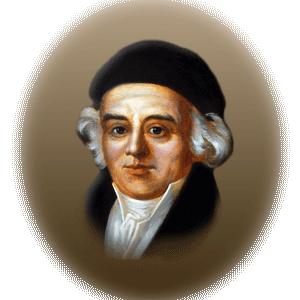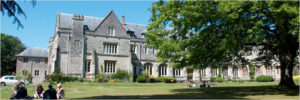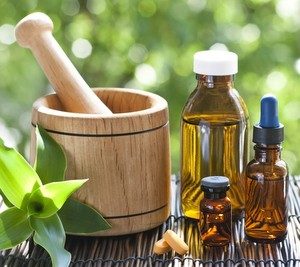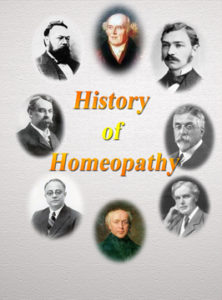The Founder of Homeopathy
 Homeopathy’s roots emerge from the findings, teachings and writings of Dr. Samuel Hahnemann (1755-1843). Hahnemann graduated from medical school in 1779 and started his own medical practice. He soon began his first homeopathic experiments in 1790, as a result of his disillusionment with such common medical practices of the day as purging, bloodletting, and the use of toxic chemicals. At one point, he gave up his own daily practice to begin working as a chemist while translating medical texts.
Homeopathy’s roots emerge from the findings, teachings and writings of Dr. Samuel Hahnemann (1755-1843). Hahnemann graduated from medical school in 1779 and started his own medical practice. He soon began his first homeopathic experiments in 1790, as a result of his disillusionment with such common medical practices of the day as purging, bloodletting, and the use of toxic chemicals. At one point, he gave up his own daily practice to begin working as a chemist while translating medical texts.
It was when Hahnemann began working on a project to translate William Cullen’s Materia Medica into German that he began his quest for a better way of providing healthcare using the principles of “Similars.” While working on this project, he became fascinated with a species of South American tree-bark (cinchona) which was being used to treat malaria-induced fever. Hahnemann ingested the bark and discovered that it caused symptoms similar to malaria.
He continued his research into “cures” and the idea of “similar suffering,” and began compiling his findings. Similia similibus curentur, the Latin phrase meaning “let likes be cured by likes,” is the primary principle of homeopathy. A homeopath searches for a substance that produces in a healthy person those same symptoms a patient experiences.
The First U.S. Homeopathic School
 Students of Hahnemann founded the first homeopathic medical school in the United States in the late 1800’s. It gained recognition because of its success in treating the many disease epidemics rampant at the time — including scarlet fever, typhoid, cholera and yellow fever. The school’s method of treatment became very popular in the early 1900’s. At that time, there were 22 homeopathic medical schools, 100 homeopathic hospitals and over 1,000 homeopathic pharmacies.
Students of Hahnemann founded the first homeopathic medical school in the United States in the late 1800’s. It gained recognition because of its success in treating the many disease epidemics rampant at the time — including scarlet fever, typhoid, cholera and yellow fever. The school’s method of treatment became very popular in the early 1900’s. At that time, there were 22 homeopathic medical schools, 100 homeopathic hospitals and over 1,000 homeopathic pharmacies.
Boston University, Stanford University and New York Medical College were among those educational institutions that were teaching homeopathy.However, it was not long after this period of time (in the early 1920’s) that many of the schools closed — mostly due to the decline of homeopathy’s popularity which was greatly effected by the American Medical Association. This was also around the time when modern drug companies began releasing drugs that were easy to administer to patients, a trend that also contributed to the decline of homeopathy.
The Homeopathic Resurgence
 Although the United States experienced a dwindling interest in homeopathy in the 20th century, other nations, including countries in Europe and Asia, were experiencing a steady growth of homeopathic teachings and interest.Today, nearly all French pharmacies sell homeopathic remedies and medicines; and homeopathy has a particularly strong following in Russia, India, Switzerland, Mexico, Germany, Netherlands, Italy, England, and South America.Homeopathy is also rising again in the United States.
Although the United States experienced a dwindling interest in homeopathy in the 20th century, other nations, including countries in Europe and Asia, were experiencing a steady growth of homeopathic teachings and interest.Today, nearly all French pharmacies sell homeopathic remedies and medicines; and homeopathy has a particularly strong following in Russia, India, Switzerland, Mexico, Germany, Netherlands, Italy, England, and South America.Homeopathy is also rising again in the United States.
This resurgence has been documented by the National Center for Homeopathy in Virginia, which stated that Americans spent 230 million dollars on homeopathic remedies in 1996. It has also been said that sales are rising rapidly at about 12 – 15% each year.Doctors, scientists, researchers, corporations and the general public are all responsible for the accelerated expansion in the interest of homeopathic products, research and educational initiatives.
History of Homeopathy in India
 The history of Homoeopathy in India can be traced as far back as the year 1835 when a Romanian man Dr. John Martin Honigberger visited India. He was called in by the Maharaja Ranjit Singh of Lahore who was suffering from paralysis of the vocal cords with swelling of the feet. He treated the Maharaja dispensing “Dulcamara” in wine, in low potency. This medicine cured him. The Maharaja was also impressed when he treated his favourate horse of his ulcer of the leg. Dr. Honigberger became the chief physician of his court.
The history of Homoeopathy in India can be traced as far back as the year 1835 when a Romanian man Dr. John Martin Honigberger visited India. He was called in by the Maharaja Ranjit Singh of Lahore who was suffering from paralysis of the vocal cords with swelling of the feet. He treated the Maharaja dispensing “Dulcamara” in wine, in low potency. This medicine cured him. The Maharaja was also impressed when he treated his favourate horse of his ulcer of the leg. Dr. Honigberger became the chief physician of his court.
Later on after the Maharaja’s death Dr. Honigberger shifted to Calcutta. In Calcutta, he was known as the “Cholera Doctor”. He wrote many books among which were “Thirty five years in The East, Adventures, Discoveries, Experiments and Historical sketches of Punjab and Kashmir”. He practised in Calcutta up to 1860. Dr. Honigberger happened to go to Vienna and caught Cholera. He saved himself by taking Ipecac, every half an hour. This incident greatly impressed him and he started dispensing Homeopathic medicines both for himself and for others. In 1836 in Tanjoor, Dr. Samuel Brookling, a retired surgical officer, dispensed homoeopathic medicines to his civilians and army officers stationed at Madras.
In 1836-1867 Dr. Mahendra Lal Sircar, learned about Homoeopathy from a layman, Rajendralal Dutta, popularly known as Babu Rajen Dutta. He had a number of cases to his credit. He cured Iswar Chandra Vidyasagar of asthma and also cured gangrene of the foot of Maharani of Shorapur, and greatly impressed Raja Sir Radhakanta Deb Bahadur of Shorapur. On 16th February 1867, Dr. Sircar wrote an article condemning allopathy titled “On the Supposed Uncertainity in Medical Science and the Relationship between Diseases and Medicine”. He was the first man to start a journal on homoeopathy – “India Medical Review” and to attend the first Homoeopathic National Congress conference under the chairmanship of Dr. C. Hering.
In 1867 Dr. Salzar of Vienna was the founder of Homoeopathic education in India. He influenced two persons towards homoeopathy namely Dr. P. C. Majumdar and Dr. B. L. Bhaduri. Dr. Majumdar along with Dr. Roy, Dr. B. N. Banerjee and Dr. Younan established the first Homoeopathic college in India in the year 1878 under the name of “Calcutta Homoeopathic Medical College” .
Dr. S. C. Ghosh proved many drugs from the Indian herbs and gave them to his patients in low potency with great results. He compiled a book named “Drugs of Hindustan”. Unfortunately, nobody noticed this book, until 1970-1971, when the “Central Council for Research in Indian Medicine and Homoeopathy” (CCRIM & H) unearthed the book and a number of drugs were proved.
In August 1869, a Bengali named Babu Priyanath Bose started a hospital with an OPD (Out Patient Department) in Allahabad. It was at this centre that Mr. Motilal Nehru took treatment during his struggle for freedom. In 1880 Father Augustus Mueller, a priest and teacher of a school founded by the Society of Jesus in Kankanady in Manglore, started dispensing free homoeopathic drugs.
In 1902 there was an epidemic of pneumonic plague and Father Augustus Muller treated most of the people successfully. He established a plague and leprosy clinic. Seeing this, the British presented him with the “Kaiser-e-Hind” award. He also wrote a book entitled “Twelve Tissue Remedies” .
In 1937 the British government had not recognised this system of medicine and it was for the first time that M.L.A. Miyan Ghias-ud-idin passed a regulation in the Bengal Assembly to allow recognition and patronage to homoeopathy. Thus, homoeopathy was introduced in Bengal for the first time in the pre-independence years.After independence, the Government was more sympathetic and on 17th Feburary 1948, Sir Satis Chandra Samanta, M.P from West-Bengal, piloted a move in the constituent assembly to establish a Central Agitation Body i.e. Central Council of Homoeopathy. This was passed after a modification by Mr. Mohan Lal Saxena M.P (U.P). It was supported by Dr. Pattabhi Sitaramayya, the President of India. Some of the important items in the draft proposal given by the representative of the All India Institute of Homoeopathy to the Government of India was of great help to put the education of homoeopathy on a firm base.
In 1944, the Government of India set up a five member committee with the Late Dr. L. D. Dhawale being one of its members. He requested the Government to recognise and allow Homoeopathic practice and teaching. He wrote a book in Marathi called the “Homoeopathic Chikitsa”. He was the spearhead in starting the “Government Homoeopathic Hospital”. In 1946 the “Council of Homoeopathy” of West Bengal was established with homoeopathy being recognised. Dr. B. K. Sarkar, (M. D.), was a renowned teacher in Homoeopathic Philosophy at Calcutta Homoeopathic Medical College. His contribution to homoeopathy was enormous. His commentaries on the 5th edition of The Organon were well known. Dr. S. P. Dey compiled one of his collections into “Essay on Homoeopathy”. Dr. B. K Bose the “Grand Teacher of Homoeopathy” passed his M.D. from Chicago and was a direct student of Dr. Kent. He was an excellent teacher in Materia Medica.
In 1952-1954 the National Congress Government appointed a small committee – Homoeopathic Reference Committee constituted by Rajkumari Amrit Kaur, the Union Health Minister of India (1952). Dr. J. C. Mukerjee was nominated as chairman of this committee comprising of six homoeopathic practitioners and four allopaths. In 1956, the need for creating a post of Honorary Advisor in the committee was felt. However, the Government approved of this post in 1960, and Dr. Krishna Gopal Saxena was the first to be appointed.The Government of India constituted a Central Council of Health, which was a committee of Health Ministers from all states and was headed by the Union Minister. This committee used to meet once a year. It passed a resolution that each state would give recognition to Homoeopathic colleges from 1960. Another resolution passed was that the Government of India should constitute a body to enforce regulations and promote research in homoeopathy.
The Maharashtra Act was passed in 1960. It constituted two bodies
Court of Examiners (concerned with education and new colleges).
Board of homoeopathy (concerned with the regulation of practice and licensing homoeopathic practitioners).
This Act was known as the “Bombay Act”. Dr. Gilder was the Health Minister. The court of examiners were looked after by Dr. M. N. Paranjpe and the Board of homoeopathy by Late Dr. S. R. Wadia who was the president.
Dr. M. V. Kulkarni followed in the footsteps of Dr. Bhattacharya in Bengal. He started “Roy and Company” in Mumbai. They were the chief importers of Mesers B & T (Boericke and Tafel) of America and Schwabe of Germany. Boger’s Boenninghausen Repertory was first published by Roy and Company in India. He also started manufacturing homoeopathic drugs in Maharashtra. Mr. James Fergusson, Governor of Mumbai took treatment from Dr. Kulkarni.
Dr. S. R. Phatak, an M. D. from Mumbai University, was influenced to practise homoeopathy. He wrote two books :-
Phatak’s Alphabetical Repertory.
Phatak’s Materia Medica.
Dr. P. Sankaran died at a very young age from cancer of the liver. He acquired name and fame internationally. In a short span of time, he wrote a number of booklets (30) on topics relevant and important to the practice of homoeopathy. He proved the drugs Aqua Marina and Pituita.
Dr. P. Sankaran popularised low priced editions of books on homoeopathy in India (not exceeding Rs. 10). He wrote a small card repertory and started a journal known as the “Indian Journal of Homoeopathy”. Presently, it is published as the “Indian Journal of Homoeopathic Medicine”which was formely edited by Dr. K. N. Kasad. Currently, it is edited by Dr. Praful Barvalia.
Dr. Burjor Boman Behram was an M.B.B.S., who was practising homoeopathy. He died very recently. Dr. U. M. Menon, though not a qualified homoeopath, acquired a lot of wealth of knowledge from homoeopathy. He was the spearhead for starting the Bombay Homoeopathic Medical College.
The Planning Commission of India gave free aid to colleges from 1966 onwards. Soon, 20 colleges availed of this facility. They were given aid to start libraries and laboratories. One of the colleges to benefit from this was the Pune Homoeopathic College.
In 1966, the Central Government, under the Ministry of Health passed a bill, which was a joint bill for setting up a Central Council of the Indian system of Medicine and Homoeopathy. This act was passed in 1969, when Ayurveda was recognised and the Central Council of Ayurveda was formed. In 1970, the Government proposed a separate bill on homoeopathy. It took one year before this bill was submitted to the parliament as new health ministers had been appointed. The Prime Minister gave consent to pass this bill in 1971, but unfortunately, because of mid-term elections, it was delayed.
On 3rd April 1972, it was introduced in the Rajya Sabha. A Joint Select Committee under the chairmanship of Smt. Purabi Mukhopadhayay (M.P. West Bengal) was formed. This committee worked for all the colleges. On 19th December 1973, the President gave his consent to the bill and thus the “Homoeopathy Central Council Act 1973″ was passed. The necessity of this bill was felt long back because most of the states had recognised colleges but the course was not established. Therefore, there was a lot of confusion as doctors could not migrate to other states to practise. This Act achieved the following :
1-Standardisation of education. 2-Standardisation of practice.
During this time, the Government of India constituted a research organisation called the Central Council for Research in Indian Medicine and Homoeopathy (CCRIM & H).In 1972, the Central Research Institute at Calcutta was established by the Government of India and three regional research institutes were set up at Delhi, Kottayam and Orissa.
During this time, the Government of India constituted a research organisation called the Central Council for Research in Indian Medicine and Homoeopathy (CCRIM & H).In 1972, the Central Research Institute at Calcutta was established by the Government of India and three regional research institutes were set up at Delhi, Kottayam and Orissa.
In this year, the research council was divided into three independent bodies:-
Central Council for research in Ayurveda.
Central Council for research in Unani.
Central Council for research in Homoeopathy.
The headquarters of the ‘Central Council for Homoeopath’ was at Ghaziabad in Delhi. Presently, there are 200 units and 10 regional institutes.The Central Council of Homoeopathy along with other recommendations, formed a uniform syllabus for diploma, degree and linked courses (diploma holders of new course and diploma holders of old course). They were called D.H.M.S., B.H.M.S. and B.H.M.S. (graded degree) respectively.
In 2007 in the state of Uttar Pradesh (population 166 million in 2001) there were 27,548 registered homeopathic practitioners compared with 38,950 medical doctors (referred to as allopaths by those practicing alternative medicine), 59,783 ayurvedic and 14,905 unani practitioners.( National Rural Health Mission. NRHM PIP_14.06.07.doc “State Action Plan Uttar Pradesh (2007 – 2008)”. Department of Family Welfare Uttar Pradesh. Retrieved 16 May 2012.)